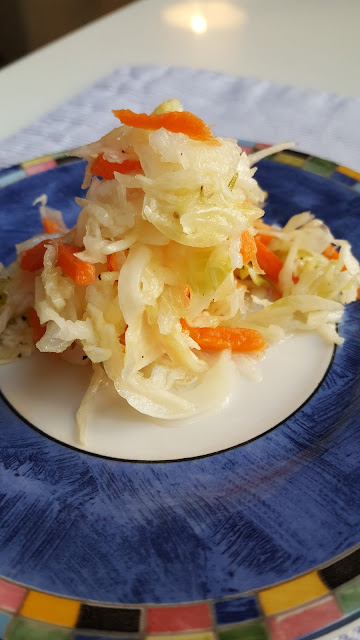Lupine Allergies
Recently on Twitter.com I was asked about lupine allergies and how they may (or may not) relate to legume and/or peanut allergies.
Never heard of lupine? (Always makes me think of the Monty Python skit: “Dennis Moore”)
According to the online Encyclopedia Britannica, Lupine is in the pea family: Fabaceae (the plant family also called Leguminosae). So you can see why there might be some concern for you peanut and/or legume allergic peeps.
As of now, in the US, we don’t see a lot of lupine in food allergy free from foods. However, lupine is all over Europe and as more European free from foods are distributed and sold here (the FA food demand is high and getting higher) lupine may be something you'll see more and more. (Here’s a BBC story about this very concern.)
* Remember: it is vital to be reading food labels with vigilance. Please call food companies if you have any questions or concerns BEFORE eating.*
So peanut or legume allergic peeps: will a product made with lupine or lupine flour be safe for you? I turned to board certified allergist Dr. Matthew Greenhawt to have a look at the literature and this was his reply:
Within the legume family, the most notorious allergen is peanut. On blood tests and on skin tests, however, it is often observed that allergy to one legume results in cross reactivity to other legumes. This concept differs from multiple legume allergies, which most commonly involves allergy to lupine, chick pea, and lentil.
Given the rates of cross reactivity, the question becomes what level of concern should a peanut allergic individual have about reactivity to any given legume?
Clinical observations have shown that peanut allergic individuals generally have less than a 5% risk of having a reaction to another legume family member. There is one notable exception: lupine. Lupine is a bean that can be processed into flour, and it is generally used as either a supplement to wheat flour or a substitute for soy flour. There have been increasing reports of lupine allergy in both peanut and non-peanut allergic individuals.
In one small recent study, lupine was potent enough to elicit reactions beginning at just a 1mg dose in both peanut and non-peanut allergic individuals. Other studies, all involving lupine challenge in peanut allergic individuals, observed rates of cross-reactivity of 13%, 22%, and 35%. Therefore, clinically relevant-cross-reactivity with lupine in peanut allergic patients is a concern.
Peanut allergic individuals should exercise caution and consider avoiding foods containing lupine until testing (only available via ImmunoCAP in the US, outside of a research institution) and possibly controlled challenge with an allergist determines there is no risk of reactivity.
It should be noted that the presence of lupine is not always clearly labeled, and concerned individuals are reminded to carefully read all package labels before ingesting their food.
UPSHOT: There is a possibility of cross reactivity. Check with your allergist about how to proceed. Need to find an allergist check out AAAAI.org.
Never heard of lupine? (Always makes me think of the Monty Python skit: “Dennis Moore”)
According to the online Encyclopedia Britannica, Lupine is in the pea family: Fabaceae (the plant family also called Leguminosae). So you can see why there might be some concern for you peanut and/or legume allergic peeps.
As of now, in the US, we don’t see a lot of lupine in food allergy free from foods. However, lupine is all over Europe and as more European free from foods are distributed and sold here (the FA food demand is high and getting higher) lupine may be something you'll see more and more. (Here’s a BBC story about this very concern.)
* Remember: it is vital to be reading food labels with vigilance. Please call food companies if you have any questions or concerns BEFORE eating.*
So peanut or legume allergic peeps: will a product made with lupine or lupine flour be safe for you? I turned to board certified allergist Dr. Matthew Greenhawt to have a look at the literature and this was his reply:
Within the legume family, the most notorious allergen is peanut. On blood tests and on skin tests, however, it is often observed that allergy to one legume results in cross reactivity to other legumes. This concept differs from multiple legume allergies, which most commonly involves allergy to lupine, chick pea, and lentil.
Given the rates of cross reactivity, the question becomes what level of concern should a peanut allergic individual have about reactivity to any given legume?
Clinical observations have shown that peanut allergic individuals generally have less than a 5% risk of having a reaction to another legume family member. There is one notable exception: lupine. Lupine is a bean that can be processed into flour, and it is generally used as either a supplement to wheat flour or a substitute for soy flour. There have been increasing reports of lupine allergy in both peanut and non-peanut allergic individuals.
In one small recent study, lupine was potent enough to elicit reactions beginning at just a 1mg dose in both peanut and non-peanut allergic individuals. Other studies, all involving lupine challenge in peanut allergic individuals, observed rates of cross-reactivity of 13%, 22%, and 35%. Therefore, clinically relevant-cross-reactivity with lupine in peanut allergic patients is a concern.
Peanut allergic individuals should exercise caution and consider avoiding foods containing lupine until testing (only available via ImmunoCAP in the US, outside of a research institution) and possibly controlled challenge with an allergist determines there is no risk of reactivity.
It should be noted that the presence of lupine is not always clearly labeled, and concerned individuals are reminded to carefully read all package labels before ingesting their food.
UPSHOT: There is a possibility of cross reactivity. Check with your allergist about how to proceed. Need to find an allergist check out AAAAI.org.


Comments